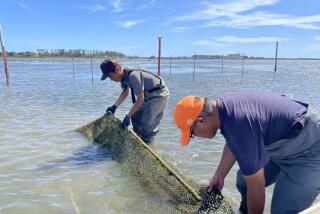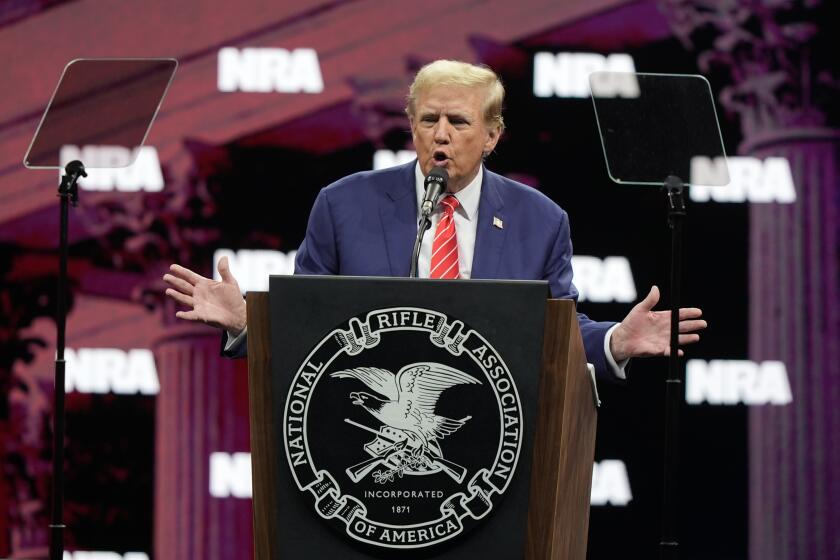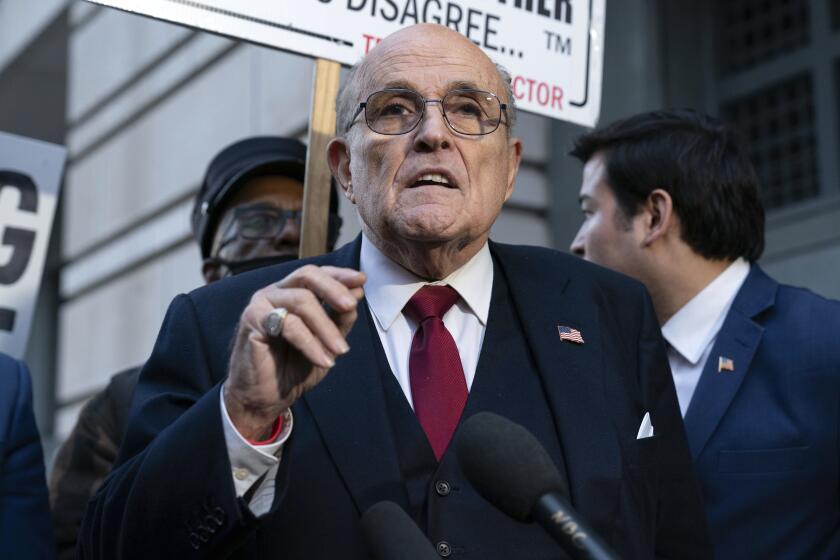Silverback Is the King, but What of His Castle?
King is scheduled for three shows a day, every day. But even after 20 years, he’s not much of a performer. So as visitors gather in front of his steel-barred cage, King often sits in the corner while a trainer pleads with him to move. “This is voluntary play time. He is not forced,” says a Monkey Jungle guide. “Sometimes he is in a lazy mood. Or he’s tired, or it’s too hot.”
King, who is 29, is the last of his kind in the United States: an adult gorilla caged in solitary confinement at a remote private zoo.
And a coalition of animal experts wants him freed. “His situation is unacceptable,” said Dan Wharton, director of New York’s Central Park Zoo. “The conditions under which he is held are so substandard that it is a shame to keep him there any longer.”
Wharton has joined officials of the American Zoo and Aquarium Assn., renowned primatologist Jane Goodall and other animal rights activists in asking King’s owners to send the 450-pound silverback male to Zoo Atlanta, where he could live in an outdoor, naturalistic environment and be introduced to others of his species.
Park’s Solution Is a Better Habitat
So far, Monkey Jungle president Sharon Dumond, whose family opened the park as a tourist attraction in rural Miami-Dade county 64 years ago, has spurned efforts to move King, saying he is content in the 30-foot-by-40-foot concrete cage in which he has lived since 1979. But Dumond has acknowledged that King deserves a new habitat.
“His enclosure is woefully inadequate,” said attorney Frank A. Rubino, to whom Monkey Jungle staffers steer calls about King. “But our solution to the problem is to build King a better habitat here.”
The assertion by animal experts that King is the last gorilla in the United States to be held in solitary in a substandard facility reflects both an evolving ethic in zoo standards and the precision with which endangered exotic animals are tracked around the world.
In the 1950s and 1960s, said AZA conservation and science director Michael Hutchins, “people didn’t worry that much about how animals were kept.
“But as we found out more about animal behavior and habitat, we moved to naturalistic exhibits, and that has been good for the animals. They act more like they do in the wild,” he said.
According to Wharton, there are 340 gorillas in captivity in the United States, and all but three--including King--are in accredited zoos, living in family groups. The other two are older animals housed together at Noell’s Ark Chimp Farm, a Tarpon Springs, Fla., zoo that was shut down last month by the Agriculture Department.
As a result of closely monitored breeding programs, Wharton said, the population of captive gorillas in this country is increasing at a rate of 1% to 2% a year.
King Is the Star at Monkey Jungle
King was captured as an infant in Cameroon and performed in Las Vegas and traveled with a circus until, at the age of 10, he was purchased by the Dumond family. He isn’t the only attraction at Monkey Jungle, which lost its AZA accreditation in 1992 after being damaged by Hurricane Andrew. The park also has a pair of orangutans and several species of monkeys, some of which roam through the thick flora above the pathways.
But King, a hulking lowland gorilla with a massive head and a reddish-gray top-knot, is the star. In thrice-daily shows, he is cajoled by a trainer, who remains outside his enclosure, to take part in play sessions--identifying blocks or touching a ball.
When he cannot be persuaded to move, food is placed on top and around the sides of his cage in spots King can reach only by climbing.
Since efforts to move King began several years ago, Monkey Jungle trainers have made attempts to enrich his environment with music, games and even neighbors. A group of chimpanzees was moved to an enclosure next door to King’s, but their incessant hooting reportedly caused King to begin banging his head against the wall. The chimps were relocated.
By all accounts, King is healthy. But the Dumonds have argued that he is not a good candidate for socialization because previous owners knocked out his front teeth to keep him from biting. Without teeth, the Dumonds have said, King lacks the means to dominate a female.
But Zoo Atlanta technology director Lori Perkins insisted King eventually could lead a family group.
Locally, the campaign to move King to Zoo Atlanta is being spearheaded by the Animal Rights Foundation of Florida, based in nearby Pembroke Pines. Several demonstrations have been held outside Monkey Jungle, and occasionally celebrities from the worlds of show business and science take a turn at picketing or writing letters.
“We must remember that these animals do not belong here,” Goodall said in a recent letter to Dumond. “What is good for us is not always good for them.”
None of those involved in the push to move King suggests that the gorilla is not well cared for at Monkey Jungle.
But, Wharton said, “If you are going to present animals to the public, it should be in way that inspires interest rather than pity and shock.”
*
Times researcher Anna M. Virtue contributed to this story.
More to Read
Start your day right
Sign up for Essential California for news, features and recommendations from the L.A. Times and beyond in your inbox six days a week.
You may occasionally receive promotional content from the Los Angeles Times.






